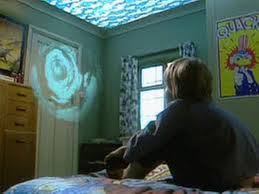 |
…Man’s supremacy is not primarily due to his brain, as most books would have one think. It is due to the brain’s capacity to make use of the information conveyed to it by a narrow band of visible light rays….

A surprisingly intelligent children’s programme was closely based on Chocky, and shown by ITV in the mid-1980s. Chocky is represented by a triangle, 80s synthesisers and the haunting voice of Glynis Brooks. Unusually for a kid's show, it begins with a blood-curdling scream. I was about eight at the time, and fortunately, just old enough to be thoroughly enthralled by it. For some reason the scene where Matthew does the Rubik’s cube (not in the book) in a World Record beating time, stayed in my mind. The programme was broadcast in several countries such as Spain and Canada, as well as being received enthusiastically in Bulgaria and Czechoslovakia (as it was then known). Andrew Ellams interprets the part of Matthew, with his parents played by Carol Drinkwater (All Creatures Great and Small) and James Hazeldine (London's Burning). All three Chocky series are prefixed by the iconic Thames Televsion intro.
Due to the success of Chocky a sequel, Chocky's Children, was written by Anthony Read. Two plots from the original are explored in more depth; Matthew's artistic promise, along with the peril arising from rapacious oil-barons vent on thwarting any attempts to develop a cheaper form of energy. Some harrowing moments ensue for Matthew, and the action scenes are set to marvellous 80s electro background music.
As in the book, Chocky vanishes from Matthew's life, and in this case doesn't reappear until the end of episode three. Meanwhile, Matthew befriends Albertine, a Cambridge Uni-bound twelve year old child prodigy. Unbeknownst to her, she is the second of Chocky's children, as our extraterrestrial protaganist has been quietly tinkering with her mind. Matthew and Albertine's relationship is very much that of a pair of 'Chrysalid-Cuckoos' as they develop a telepathic form of communication. All-in-all the plot and dialogue are refreshingly high-brow for a youthful audience.
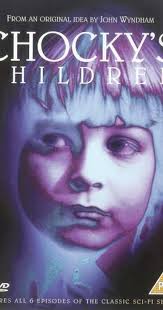 |
The third six-part installment was titled Chocky's Challenge, and indeed retaining the viewer's interest in any Series Three is seldom straight-forward.
Albertine and her father have replaced Matthew and his parents as the main focus. They're faced by the usual shadowy military and business figures, a few jealous academics piqued along the way, and the odd gutter-hack. In an echo of Children of the Damned (another Wyndham-inspired spin-off), other precocious young talents are gathered from around the Globe, including a high-fiving, street-wise youth from a ghetto near Harvard. Chocky promises to show them 'how to harness the full power of the Cosmos', no less. Probably as a child I enjoyed the addition of more young characters but here matters get a bit bogged down. Also, as increasing numbers of people both adult and child learn of Chocky, the drama starts to lose its' edge. It also contradicts Chocky's words in the first two series, where she implores Matthew to keep her existance secret. They children are essentially good Midwich Cuckoos using psychic energy to overcome their obstacles.
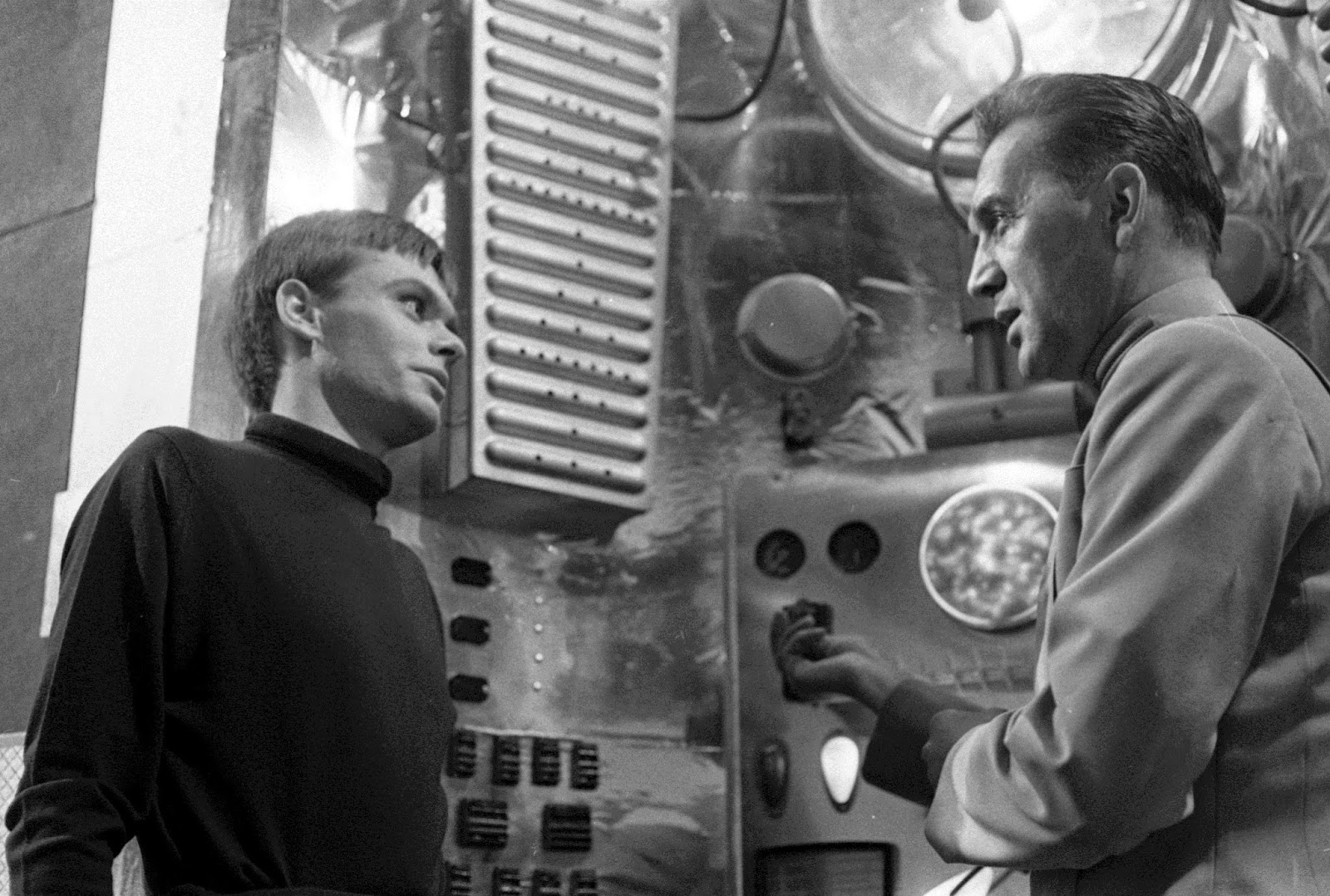 |
The 1960s Film version of Triffids is unintentionally amusing, but not one for the Wyndham purists. The triffids themselves are aliens, allergic to seawater and look suspiciously like men in green costumes. The plot bears so spurious a relationship to the original book that one wonders why director Steve Sekely bothered. That said, if 60s B-Movies appeal then you may well enjoy it. This very loose adaptation inspired the 1975 cult hit The Rocky Horror Picture Show, with the lyric:
'And I really got hot
When I saw Jeanette Scott
Fight a Triffid that spits poison and kills.'
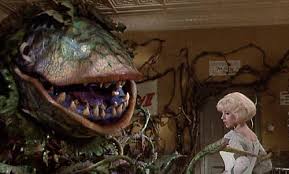 |
The only other celluloid adaptation is the 2005 film 28 Days later, which replaces triffids with rage-filled ‘zombies’, but retains much of the plot.
In the early Nineteen Eighties the BBC had a crack at Wyndham’s masterpiece. The three hour (six episodes) televisual adaptation does make some edits and changes. The first half an hour shows Bill Masen, in hospital with a bandaged head, recording his thoughts on triffids, not yet realising that his world is falling apart. This allows the makers to fully explain the ambulatory plants, but misses out on the immediacy of Wyndham's first chapter. Once Masen flees the hospital he finds himself in a stranger's flat, whereas in the book, he understandably visits the pub. The BBC also entirely effaces the chapter involving Stephen Brennel and his small tribe. The helicopter pilot Ivan is also airbrushed from the screenplay.
Yet to the Beeb’s credit they at least maintain the spirit of the novel. Unfortunately the series suffers one major drawback, the triffids themselves. The special effects department was really not up to the job of re-creating the carnivorous plants, and wires are sometimes visible holding up the large pieces of obviously man-made fibre. Additionally, the budget seems to have restrained the BBC from producing more than a dozen or so of these props, so that any sense of a besieging army of triffids menacing Shirning Farm is lost. Another piece of naff technology showcased is the triffid gun used in episode five.
Britons of a certain age will recognise a host of c-list home-grown actors from the 80s and 90s from such productions as Howard’s Way, Two Point Four Children, Drop the Dead Donkey and The Bill.
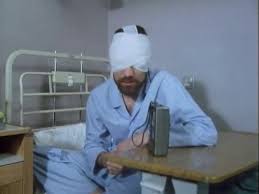 |
In late 2009 a new, breathtakingly awful rendition was broadcast by the BBC. Like Danny Boyles' 28 Days Later it managed to rush the opening hospital scene, thus losing most of the tension. The CGI triffids are more convincing then anything that has gone before them, but arguably they are too terrifying. Not only has extra height been gained, they also grab onto their prey. At the same time these triffids seem to lack the guile of the originals. Whereas in the book, the triffids most sinister qualities are their intelligent design, and ability to bide time, these new plants are genetically tweaked, rather than created from scratch. They behave in the predictable manner of a Horror Film creation wanting simply to eat humans, rather than make them extinct. The whole race against time element is extremely patronising, and again misses the menace of triffids.
It is a strange viewing experience for those already familiar with the book. Many scenes resemble passages from the novel, but hardly any are left wholly in tact. Certainly the writers have been inventive, without ever bettering the original chapters. Coker, probably the most complex character, has been dumbed-down, and delivers the worst line: 'I want Bill Masen on our team'. On the other hand Torrence (who pops up only twice in the book, albiet at crucial junctures) is central to the plot from the start. Another low point is when Masen desperately searches for a car, instead of just taking one from a blind/dead owner. A further disappointment is the lack of atmosphere in post-apocalytic London. The lights do not go out immediately, few people are drunk, and civilsation does not seem to have entirely collapsed. However the very worst aspect is the appalling addition of Masen's estranged father. Surely the odds of both father and son separately surviving the celestial blinding would be tiny, though this is not addressed. There then follows some hackneyed dialogue along the lines of 'you were never there for me when I needed you Dad'. It insults the intelligence at so many turns, while lacking even the charm of the Sixties B-Movie.
Notwithstanding all the many weak points, hopefully some viewers will pick up a Wyndham book for the first time as a result.
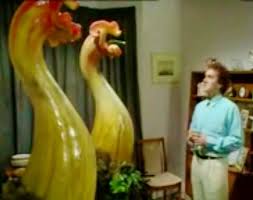 |
Perhaps the most surreal rendering of triffids was on the Alexi Sayle Show. The Liverpudlian alternative comedian is not everybody's cup of tea, but it did bring a brief smile to the face of this WyndhamWeb editor. It features Angus Deayton, famed, in the UK at least, as the original host of the excellent satirical current affairs quiz Have I Got News For You. The man-eating plants have been given Dalek-like voices, making them surely the only walking and talking triffids to have been transmitted into our homes. The two minute sketch is/was available on Youtube.
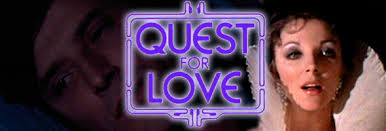 |
Wyndham's shortish story Random Quest has been filmed on three separate occasions. As mentioned above in No Place Like Earth, a version featured in the BBC Sci-Fi series Out of the Unknown has been regrettably lost for posterity.
There was also a Ralph Thomas film made re-titled Quest for Love (1971), starring Joan Collins and Tom Bell, alongside a cast of B-list UK actors of whom Denholm Elliot (most famous for his villainous part in two of the Indiana Jones adventures, and playing the butler in Trading Places) is probably the most familiar to an international audience. The adaptation is watchable if tarnished a touch by the melodramatic background music, and the odd unconvincing moment such as Ottilie's death scene in one of the parallel dimensions. Quest for Love is nothing spectacular but competently acted, and worth an hour and a half of any Wyndham fan's time.
 |
The recent BBC 2006 version gave a new lease of life to Wyndham's short story Random Quest. It has a very stylised look, but there is substance to this one-off hour long drama, and it definitely captures the spirit of the original. The divergence in time has been moved forward to the 1980s, whereas in the original story, and Quest for Love, it was at some point in the 1920s. (Therefore in this adaptation the Cold War is unfinished, as opposed to the Second World War, with some of the consequent scientific advances, never occurring). The ending is closer to Wyndham's tale, and the viewer like the reader, is left to imagine what happened to Ottilie in the other dimension.
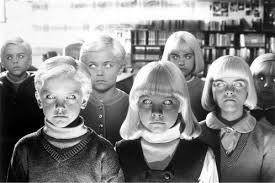 |
Despite changing the name to Village of the Damned, the makers of the 1960 Black and White version stayed generally faithful to the original. The marble-mouthed actors add to the authenticity, and the children are much more convincing than in the Nineties reprise. For many years British censors considered the children's infamous glowing eyes to be too terrifying for the audience, whereas American cinema-goers were deemed mature enough to cope with the horrifying new special effect. Zellaby is played by the late English actor George Sanders, who is best known for his part in the classic flick All About Eve and providing the voice for Shere Khan in Disney's version of The Jungle Book. His co-star is Hammer Horror heroine Barbara Shelley, and look out for Peter Vaughan (known to British viewers as Groaty from Porridge, and internationally as Maester Aemon in Game of Thrones) who plays the village Bobby.
Youtube periodically removes the decent 1960 Black and White edition of Village of the Damned, but stay patient and you’ll find it; or one could even buy the DVD.
Three years later an unofficial sequel The Children of The Damned was released. Humanity comes into conflict with six children from across the globe (China, Russia, America, Nigeria, India and Britain). The picture seems as much influenced by The Chrysalids as The Midwich Cuckoos, since the telepathic children are very much the victims of a witchhunt. This spinoff in turn inspired the track Children of the Damned by British Heavy Metal rockers Iron Maiden. The song features on their hit album The Number of the Beast.
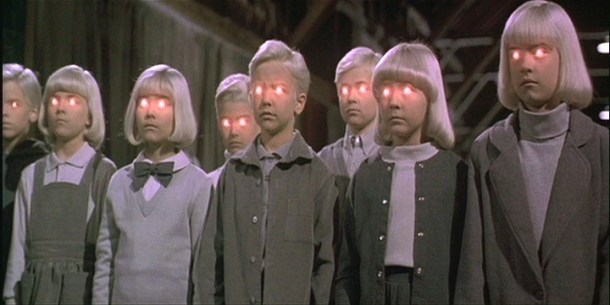 |
Midwich/Village of the Damned has also been parodied on a number of occasions, most notably in an episode of The Simpsons called Wild Barts Can't be Broken.
Directed by Ka Wao Thi Bang Phleng Blackbirds at Bangpleng is a crossover SF/Horror adaptation of Midwich, with a Southeast Asian twist. In rural Thailand, a village celebrating a Buddhist festival is targeted by a spawning UFO. The gestation period for the women's offspring is just a few hours, and the little dears soon develop a taste for raw meat. Lacking a working knowledge of the Thai language, WyndhamWeb is unable to present a full review of the subtitle-less picture.
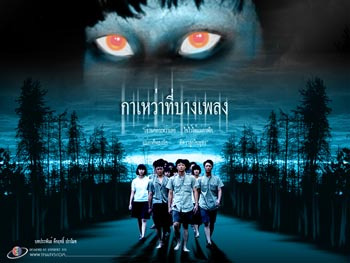 |
John Wyndham was the primary influence on the genesis of Doctor Who. A BBC white paper in 1962 gave Wyndham as an example of how Science Fiction could appeal to audiences beyond the traditional niche. Several of the Timelord's ventures are homages to JW books such as Triffids, Kraken, and Midwich. Though I'm partial to the odd viewing of the Doctor, I'm not anorak enough to have a real insight into the 'Whoniverse', others have blogged definetively on the topic. The BBC report proposed championing a more cerebral British style of Sci-fi:
'Then comes the large field of what might be called the Threat to Mankind, and Cosmic Disaster. Most of the novels, and most of the British work find their themes here. This is the broad mid-section of SF writing, that best known to the public and more or lees identified with SF as such. The best practitioner is John Wyndham. Exploiting instinctive psychic fears, the literature of Threat and Disaster has the most compulsive pull and probably indicates the most likely vein for TV exploitation.'
 |
Wyndham Archive
Liverpool University proudly acquired the complete John Wyndham archive in the late 1990s, and their web-page will surely interest Wyndham fans.
 |
The Face of Wyndham
Wyndham Documentary
'The Invisible Man of Science Fiction' is impermanently available on Youtube. It’s from a 2005 BBC documentary on John Wyndham, which left me with mixed feelings. On the positive side it’s brilliant to see anything about Wyndham on our television sets, and this is a good introductory biography. However, it still seems slightly dismissive of much of Wyndham’s work, and portrays Triffids and Chrysalids as little more than pulp fiction. It also focuses disproportionally on Trouble with Lichen and Midwich (beware it contains spoilers for both). Still worth a watch especially for the interview clip of the great man himself.
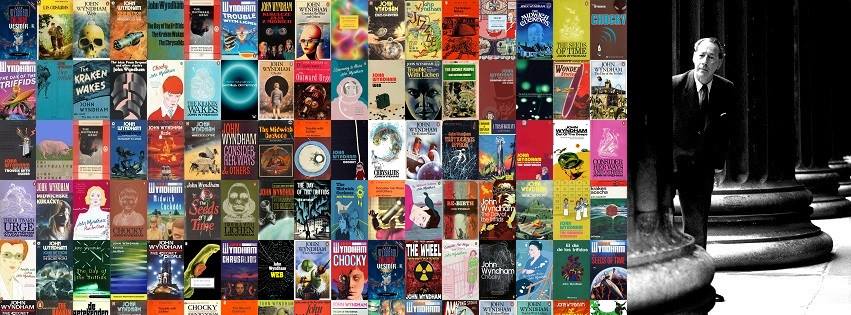
What Wyndham would have made of social media is anybody's guess, as is how it would have influenced his plots. For those interested, a knowledgable and devoted Facebook page is available: